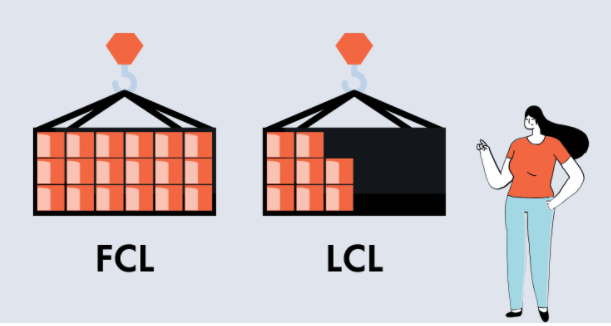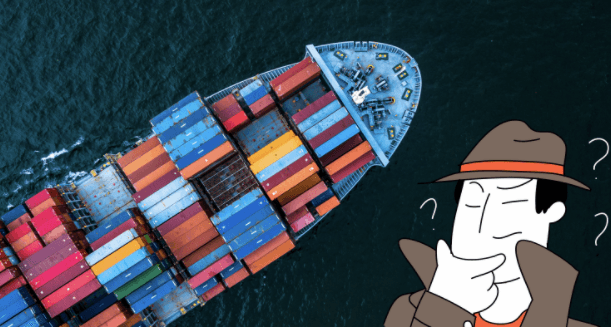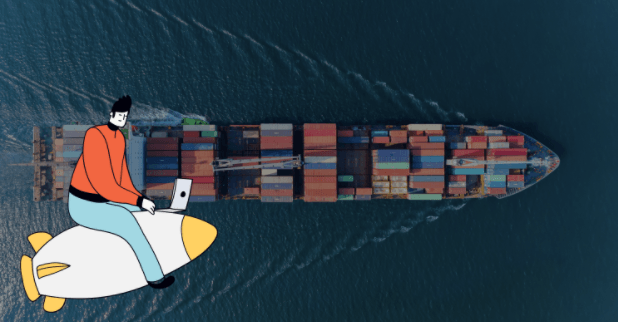
LCL vs. FCL Container Shipping - Which One Should I Choose?
Find out whether LCL or FCL is better suited to your container shipping needs.
If you’re planning to ship containerized goods by sea, you’ll need to choose between less-than-container-load (LCL) and full-container-load (FCL) shipping modes. But are you aware of how they differ from one another and their pros and cons?
What are LCL and FCL?
LCL and FCL are the two modes of transportation for containerized freight. LCL stands for less-than-container-load and refers to the scenario in which consignments from several shippers are packed together into one container.
FCL stands for full-container-load. You pay a flat rate to hire a container for your exclusive use and for its transportation. You don’t have to fill the container, but if you don’t you’ll effectively be paying to transport thin air.
What Are The Differences Between FCL and LCL Container Shipping?

There may only be one letter that’s different in FCL and LCL, but there are big differences between their meanings. Let’s take a look at them.
Important Things To Know About An LCL Shipment
LCL is often the preferred mode of shipment when a shipper does not have a high enough volume of cargo to fill a standard 20ft or 40ft shipping container. The freight may also be too large, heavy, or hazardous to be couriered or shipped as air freight.
A freight forwarder can arrange for your cargo to be picked up, or you can arrange for your goods to be transported to the consolidation warehouse yourselves. If you choose this option, it’s vital that your cargo arrives in good time, packaged, and ready to load.
In LCL carriage, your freight will share occupancy of a shipping container with that of other businesses. The process of combining multiple shipments into one LCL container is known as consolidation or groupage.
Consolidation and Deconsolidation
Consolidation can be carried out by the carrier, freight forwarder, logistics provider, or consolidator in special warehouses, many of which are located in or near to ports. As one shipper’s consignment won’t fill a container, planning teams will optimize the load configuration of multiple consignments for each container. When the LCL container is ready, it will be transported to the port of departure where responsibility for the freight passes to the shipping line.
Usually, the transit time for LCL shipping is similar to FCL shipping. It can sometimes work out faster if your cargo fills space in a container at the last minute.
When the container arrives as its destination, the forwarder’s agent in that location will collect the container and transport it to the deconsolidation warehouse. Here, the load will be separated into each shipper’s consignment. Each consignment can then be collected from the warehouse by the recipient, or delivered to a specified address, depending on whether a port-to-port or port-to-door delivery has been arranged.
Transhipment and Reworking can Sometimes Slow LCL Shipping Down
LCL is typically more economical as a shipping option for smaller volumes of freight. You’ll just pay for the space your goods occupy in the container, as opposed to paying for a full unit as you do in FCL shipping.
However, one thing to remember is that LCL shipping can sometimes involve transshipment or container reworking (or both) en route. Transshipment means your container will be offloaded from one vessel and transferred to another at some point during ocean transit.
Container reworking is when all goods are removed from one container and transferred to another during shipping. Occasionally, during reworking, shipments can be held up while enough goods are gathered to fill a container. This can extend the shipping duration beyond the scheduled transit time.
Transshipment and reworking are not only potential bottlenecks for your LCL freight shipments, they also increase the number of times your goods are moved and handled. However, when planning your shipments, your freight forwarder might be able to help you select LCL carriers or routes that are less likely to involve these extra touchpoints.
Important Things To Know About An FCL Shipment
In an FCL shipment, all the cargo in a container will be yours. That’s because you pay a flat fee to rent and ship the container. It’s often possible to choose between the following types of FCL service:
-
Port to port - Your freight fee will cover the ocean leg of shipping only, from the first port at which the container boards a vessel, to the last port at which it is discharged from a vessel.
-
Door to door - Your freight fee will cover your container’s transportation from the point at which it is stuffed to the point at which it is destuffed. This typically means from the premises of the goods consignor, to the premises of the consignee.
-
Door to port - Your freight fee will cover the container’s transportation from the point at which it is stuffed, to the last port at which it is discharged from a vessel.
-
Port to door - your freight fee will cover the container’s transportation from the first port at which it boards a vessel, to the consignee’s premises, or wherever it will be destuffed.
FCL shipping usually works out more cost-effective for bigger shipments. If your consignment takes up more than half the space in a standard 20ft container (about six pallets worth), FCL is likely to be the best option.
***It’s worth knowing that with FCL shipping, you decide how much freight you put in your container. It makes commercial sense to load as many goods as you can into the container you’re paying for. ***
When you ship a container that isn’t full, the unused space will need to be packed with dunnage to stop the contents shifting and potentially being damaged during transit.
In FCL shipping, containers are usually loaded (stuffed) and sealed by the shipper and transported to the port of departure by rail or road. After arrival at the destination port and clearing customs, each shipping container is delivered to its consignee on the back of a truck, and deposited for unloading (destuffing).
Ocean LCL vs FCL: Which One Should You Choose?

If your business plans to ship goods in a container by sea, you’ll need to choose the mode of shipping that best meets the needs of your supply chain. Answering the questions below will help you to decide whether LCL or FCL best suits your international shipping scenario.
How Big Is Your Consignment?
The volume of goods you’re moving (usually measured in cubic meters) has a big role to play in whether you ship them as LCL or FCL consignments. LCL is typically the best option for volumes of between two and 13 cubic meters.
FCL shipping is usually the most cost-effective choice for volumes greater than 14 cubic meters, which is half the capacity of a standard 20ft shipping container. A handy calculator is available to help you work out the volume of your consignment.
How Heavy Is Your Consignment?
Choosing the best way to ship goods is something a freight forwarder can help you with. Ocean shipping is usually the most cost-effective option for shipments weighing more than 100 kilograms. You might want to consider air freight if your cargo is lighter than that, assuming it’s small enough to be shipped on an aircraft and safe to do so. Very heavy or awkwardly-shaped cargo may not be suitable to ship in a container at all, in which case break bulk is an option to consider.
What’s Your Budget?
Both FCL and LCL ocean shipping are typically less expensive than air freight. Ocean shipping rates vary, usually based on the level of demand.
FCL prices tend to be more volatile than LCL, but during busy shipping periods such as peak season from August to October, or the weeks leading up to China’s Golden Week national holiday (1st to 7th October), prices tend to increase. This is due to the limited availability of containers, vessels, and staff to load and process shipments. You may find it easier to book LCL shipments than FCL during these periods.
LCL v FCL: How To Choose?
If you are using the services of a freight forwarder, they will help you decide whether FCL or LCL is best for your goods. Your forwarder can also help you decide which type of container is best for your cargo.
In any case, to help you further in your choice between FCL and LCL, we’ve outlined a few advantages and disadvantages of each method of ocean shipping:
The Pros And Cons Of LCL and FCL Shipping
Advantages of LCL shipping:
- Provides the most cost-effective way of shipping consignments too small to fill a container
- Ideal for goods occupying no more than six standard pallets
- A good solution if your business can’t wait until you’ve got enough goods to make it financially viable to book an FCL shipment
Potential disadvantages of LCL shipping:
- Fragile goods could be damaged due to frequent moving and handling
- You cannot control which goods are shipped in the same container as your goods
- Can be less reliable than FCL if your consignee needs the shipment by a specific date
Advantages of FCL shipping:
- Ideal for bulky, heavy, or awkwardly-shaped freight that cannot share a container
- Cargo is typically moved or handled less frequently than LCL shipping
- Most cost-effective way to ship freight occupying at least half the capacity of a standard 20ft shipping container (6 pallets), or a 40ft shipping container (12 pallets)
Potential disadvantages of FCL shipping:
- The shipper/supplier will need appropriate facilities to load and seal the container
- The consignee will need to unload their container
- Typically less cost-effective than LCL for shipping consignments occupy less than half the capacity of a 20ft shipping container
Which is Cheaper, LCL or FCL?
There is no way to compare the overall cost of LCL and FCL freight services. Many variables affect the cost of shipping.
But, in most cases:
- LCL shipping could save you money if you don’t have a full container load of goods to ship
- FCL shipping is less expensive per unit of freight if you have a lot of freight to ship (more than half the capacity of a standard 20ft container)
Which is Faster, LCL or FCL?
The transit time for FCL and LCL shipments is usually the same. Where timings can vary is before and after the physical shipment of the goods. FCL requires no consolidation or deconsolidation, so processing freight is usually faster. But, as mentioned above, if your cargo is added to an LCL container at the last minute, shipment time can be as quick, if not quicker, than an FCL shipment.
Ready To Decide Between LCL and FCL?

Information is power, and hopefully, this article has given you the information you need to decide whether LCL or FCL shipping is best for you. If you’re shipping goods in a container, you’ll need to choose one or the other. The weight, volume, size, and nature of your goods all play a key role in your decision—and so can your freight forwarder.


